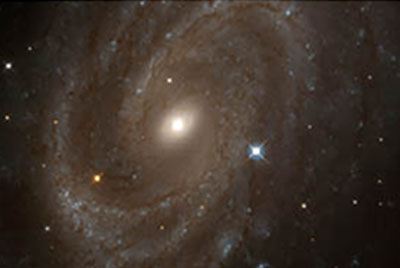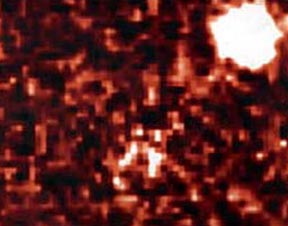Click on image for full size
NASA
Related links:
Scientists Find the True Hubble Constant!
News story originally written on May 26, 1999
After eight long years, the Hubble Space Telescope Key Project Team finally revealed what they believe is the real Hubble Constant. The Hubble Constant is the speed which the Universe is expanding at. For over 70 years, scientists have argued over the exact number.
"Before Hubble, astronomers could not decide if the universe was 10 billion or 20 billion years old," said team leader Wendy Freedman of the Observatories of the Carnegie Institution of Washington. "The size scale of the universe had a range so vast that it didn't allow astronomers to confront with any certainty many of the most basic questions about the origin and eventual fate of the cosmos. After all these years, we are finally entering an era of precision cosmology. Now we can more reliably address the broader picture of the universe's origin, evolution and destiny."
Scientists are able to use the constant to "work backwards", in order to find the age of the Universe. Now that the Hubble team has found Hubble's Constant to be 70 kilometers per second per megaparsec, they have determined the age of the Universe to be 12 billion years old. At one time, scientists differed on the value of the constant by a factor of 2. Now, the constant has been measured with an error of only 10 percent.
"The truth is out there, and we will find it," said Dr. Robert Kirshner of Harvard University. "We used to disagree by a factor of two; now we are just as passionate about ten percent. A factor of two is like being unsure if you have one foot or two. Ten percent is like arguing about one toe. It's a big step forward."
The Hubble team used a certain type of star called a Cepheid variable star. A Cepheid is a special pulsating star that can be used to make precise distance measurements. Over 800 Cepheids were found during the 10 year project.
Finding the Hubble Constant was one of three original goals set by astronomers when the telescope was first launched in 1990. The telescope is named after Edwin Hubble, the first to believe the Universe is expanding.















